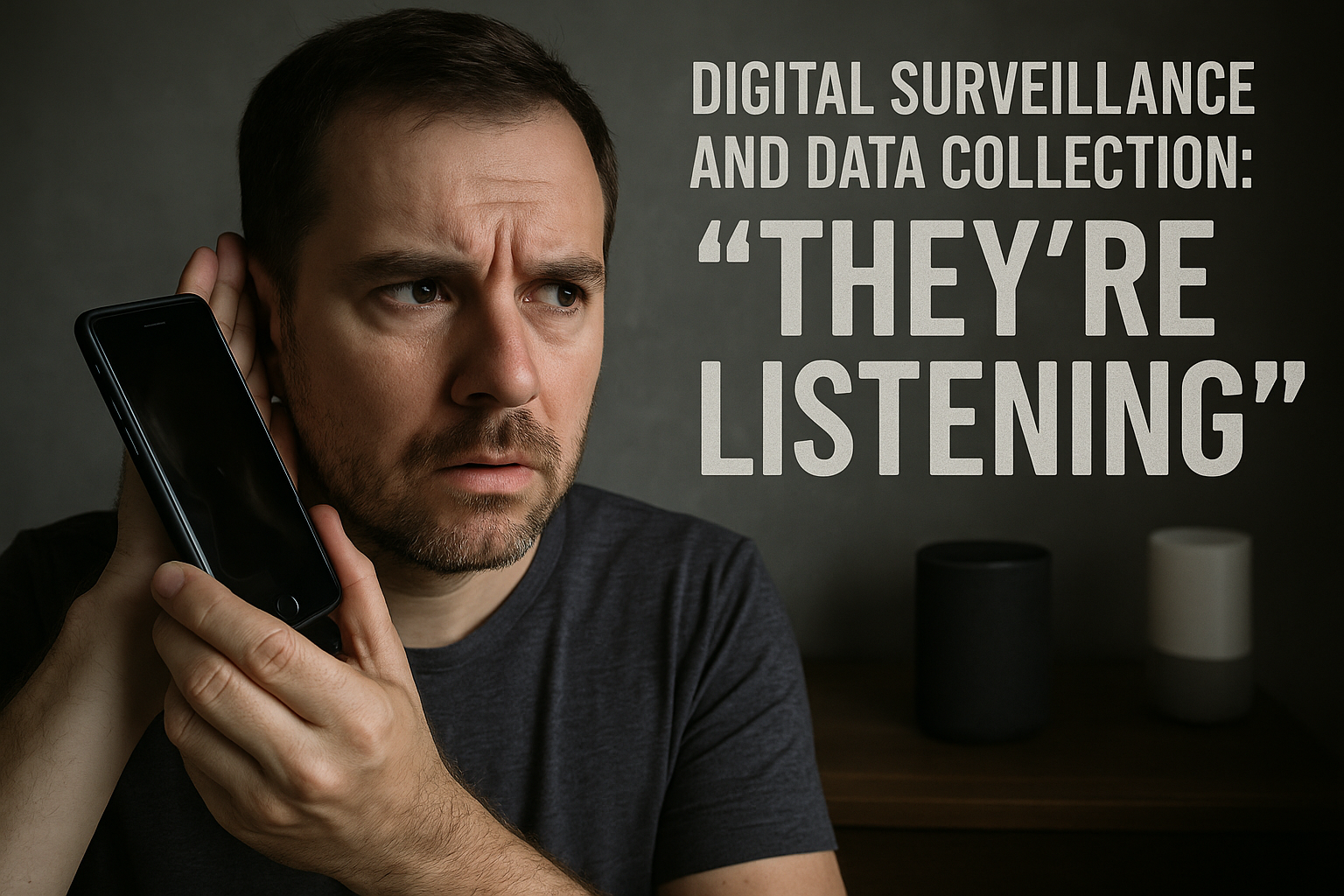This website is in the works! Things will get fixed with time.
Digital Surveillance and Data Collection: “They’re Listening” (Smartphones/Smart Devices)
In an era defined by pervasive connectivity, our smartphones and smart devices have become indispensable extensions of ourselves. From managing our schedules to controlling our homes, these gadgets offer unparalleled convenience. However, this seamless integration comes with a profound, often unsettling, trade-off: the constant potential for digital surveillance and extensive data collection. The chilling phrase “They’re Listening” echoes a growing public concern about the unseen mechanisms by which our devices gather intimate details of our lives.
At the heart of this concern lies the very functionality that makes these devices “smart.” Voice assistants like Siri, Google Assistant, and Alexa are designed to be “always-on,” passively listening for their designated “wake words.” While companies assure us that audio data is only transmitted to the cloud for processing after a wake word is detected, instances of accidental recordings and mishandled data have fueled public mistrust. The technology behind this involves sophisticated speech recognition, natural language processing (NLP), and machine learning, where ambient sounds are continuously analyzed for patterns matching the wake word. Once triggered, the device actively records the user’s request, converts
Digital Surveillance and Data Collection: “They’re Listening” (Smartphones/Smart Devices)
In an increasingly interconnected world, the convenience offered by our smartphones and smart home devices often comes with an unseen cost: the pervasive collection of our personal data. The unsettling feeling that “they’re listening” isn’t merely a paranoid fantasy; it’s a complex reality rooted in the very design and functionality of these ubiquitous technologies. From the moment we utter a wake word like “Hey Siri” or “Alexa,” to the subtle background processes of our mobile applications, our digital companions are constantly engaging with our environment, processing our conversations, and accumulating vast amounts of information about our lives.
This continuous engagement isn’t always malicious, but it raises significant privacy concerns. Voice assistants, for instance, are designed to passively listen for their designated wake words. While companies assert that audio data is only transmitted to the cloud for processing after a wake word is detected, instances of accidental recordings and leaks have occurred, highlighting the inherent risks. Beyond explicit voice commands, a myriad of apps on our smartphones request and often receive permissions to access our microphones, cameras, locations, and even messages. This data, often collected without explicit, transparent consent, can be used to build detailed user profiles, analyze behaviors, and even predict our next moves, serving purposes ranging from targeted advertising to more intrusive forms of surveillance. The mechanisms behind this pervasive listening are multifaceted. Voice assistants, for instance, employ “always-on” microphones that constantly listen for a specific “wake word” (e.g., “Alexa,” “Hey Google,” “Hey Siri”). Once detected, the device activates, records your command, and sends it to cloud-based servers for processing using speech recognition and natural language processing (NLP) algorithms. This data is then used to fulfill your request and, crucially, to train and improve the AI models, making them more accurate over time. However, the line between passive listening for a wake word and active recording can sometimes blur, leading to accidental activations and the capture of unintended conversations.

Beyond voice assistants, general smartphone applications can also contribute to the “listening” phenomenon. Many apps, even those seemingly unrelated to audio, request microphone permissions. While some might genuinely need this for features like in-app voice messaging or video recording, others might leverage it for less transparent data collection. This could involve ambient listening for keywords to serve targeted advertisements, or even more sophisticated data mining techniques that analyze your surrounding audio for insights into your lifestyle, habits, and preferences. The sheer volume of data generated by our mobile phones—from call logs and text messages to internet browsing history and application usage—provides a rich vein for data mining, allowing companies to build comprehensive profiles of users. The extensive data collection by smartphones and smart devices raises numerous privacy concerns. Beyond the “always-on” microphone, these devices gather a wide array of personal information, including usage patterns, user preferences, and precise location data. This information is often linked to user profiles, potentially revealing sensitive details like personal addresses and even health data. Companies then leverage this aggregated data for various purposes, including targeted advertising, market research, and even sharing with third parties, often without the user’s full awareness or explicit consent.
The interconnected nature of these devices, forming what is known as the Internet of Things (IoT), further amplifies security vulnerabilities. Poorly secured devices can become entry points for cyberattacks, allowing unauthorized access to personal information, eavesdropping on conversations, or even gaining control over other connected devices within a network. Instances of data breaches and accidental leaks of sensitive audio snippets underscore the inherent risks associated with such pervasive data collection.
To mitigate these risks, users can take several proactive steps. Regularly reviewing and adjusting privacy settings on both smartphones and smart devices is crucial. This includes limiting microphone access for unnecessary apps, disabling location tracking when not needed, and opting out of targeted advertising where possible. Muting smart devices when not in use and regularly deleting voice recording histories can also help. Furthermore, being mindful of the apps downloaded, ensuring they are from verified sources, and keeping device software updated are essential practices to protect against malware and unauthorized data monitoring.
Ultimately, while the convenience offered by smartphones and smart devices is undeniable, understanding their data collection practices and taking proactive steps to manage privacy settings are vital for safeguarding personal information in the digital age.








